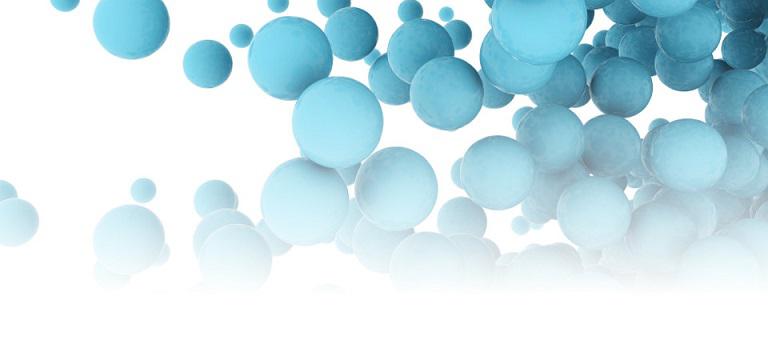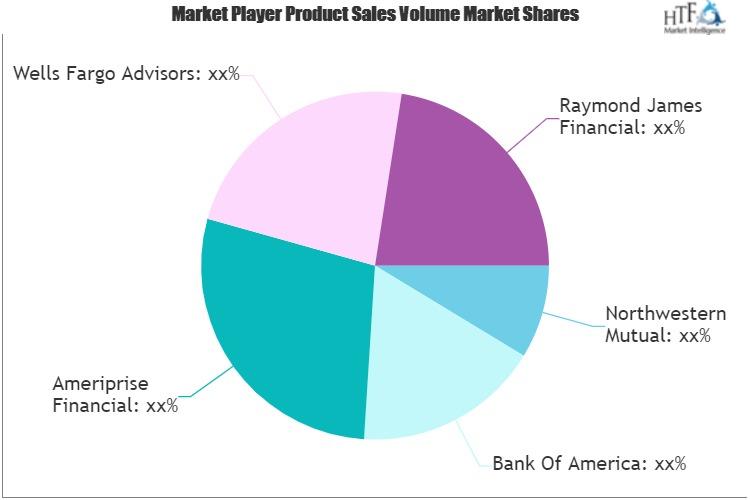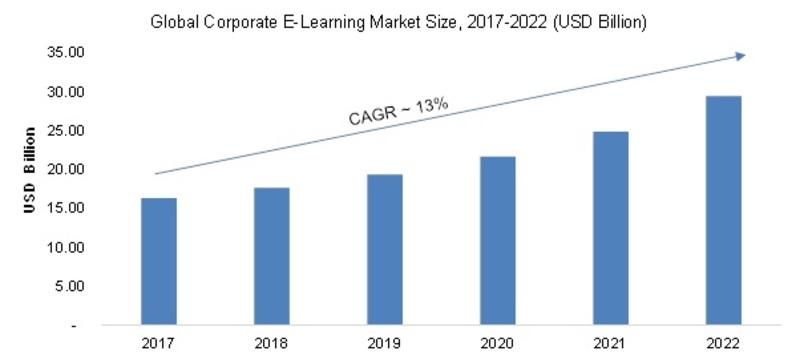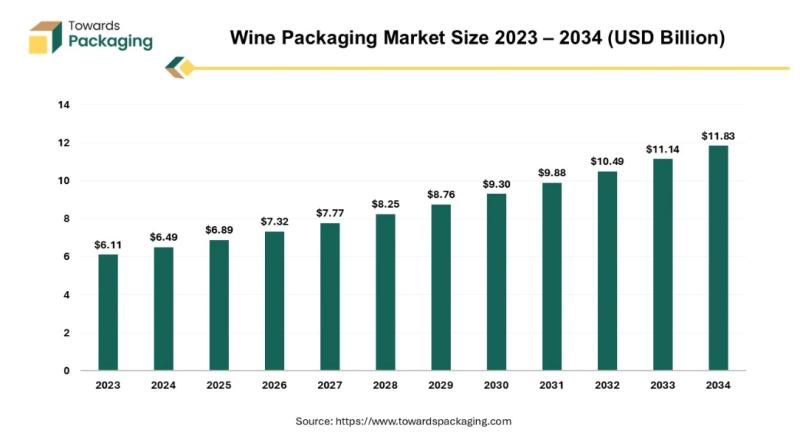Press release
Transforming Wine Packaging with Cutting-Edge Technologies
The global wine packaging market has seen a steady rise, with an estimated valuation of US$ 6.11 billion in 2023. This industry is projected to reach an impressive US$ 11.83 billion by 2034, growing at a compound annual growth rate (CAGR) of 6.19% from 2024 to 2034. As the wine industry evolves, so does the demand for innovative and sustainable packaging solutions, driving growth and opening new opportunities for wine packaging manufacturers.
Download a Brochure of Wine Packaging Market: https://www.towardspackaging.com/download-brochure/5217b
Wine Packaging: A Market in Transition
Traditionally, glass bottles have dominated the wine packaging sector, maintaining a significant presence due to their ability to preserve the quality and taste of the wine. However, a shift toward innovative packaging solutions is underway, as consumer preferences evolve toward convenience, portability, and sustainability.
The stringent packaging regulations enforced by the Alcohol and Tobacco Tax and Trade Bureau (TTB) in the United States have historically limited packaging options for winemakers. These rules stipulated that wine could only be sold in certain sizes. Unlike beer, which could be packaged in various sizes, wine's packaging options were confined to specific volumes, including the widely recognized 750ml bottle. This standardization had its roots in both legal and historical requirements that shaped the wine industry for decades.
However, as consumer demand for flexibility and convenience increases, the packaging landscape for wine is transforming. The TTB's recent decision to introduce new packaging formats, such as the 355ml size, aligns wine with the popular 12-ounce can of beer. This innovation is providing wineries with the opportunity to offer glass-free, portable alternatives that make wine more approachable and accessible to a broader range of consumers. As wine becomes more portable, it also opens the door for new consumer experiences that can expand the reach of wineries in domestic and international markets.
A Growth Trajectory Fueled by Convenience and Sustainability
From 2025 to 2030, the wine packaging market is set to experience substantial growth, driven by the increasing consumer demand for convenience and sustainability. This period is expected to see the market expand at a CAGR of approximately 6.19%, growing from USD 6.73 billion in 2025 to an estimated USD 8.95 billion by 2030.
Several factors contribute to this upward trajectory. First, consumers are increasingly seeking convenience when it comes to purchasing and consuming wine. The demand for smaller, more portable packaging options is growing, particularly among younger demographics who appreciate the flexibility of single-serve formats or those suitable for on-the-go consumption. In addition, sustainability is becoming a key consideration for both consumers and wineries. With heightened awareness of environmental issues, there is a strong preference for eco-friendly and recyclable packaging materials, which are driving innovation across the industry.
The rise of online wine sales is another significant factor supporting the growth of the wine packaging market. As e-commerce continues to thrive, wineries must adapt their packaging to ensure that products arrive in perfect condition and are easy to transport. Additionally, technological advancements in packaging solutions, such as tamper-proof seals and improved bottle designs, are further enhancing the consumer experience and reducing the risk of damage during transit.
Furthermore, the expansion of the wine market in developing economies, coupled with growing consumer interest in premium and artisanal wines, is expected to boost the demand for specialized and high-quality packaging. As the middle class continues to rise in emerging markets, the demand for premium wines with distinctive, well-designed packaging is poised to grow, presenting wineries with new opportunities to differentiate themselves.
Artificial Intelligence: The Next Frontier in Wine Packaging
The integration of Artificial Intelligence (AI) in the wine packaging sector is an emerging trend that promises to revolutionize the industry. AI has been slowly making its way into various facets of the packaging industry, from optimizing production processes to improving supply chain efficiency and reducing operational costs. The potential applications of AI in wine packaging are vast and can significantly enhance the packaging process, making it more efficient, customizable, and environmentally sustainable.
One of the most promising applications of AI in wine packaging is the ability to create personalized and unique packaging designs. Through machine learning (ML) algorithms, AI can help wineries develop packaging solutions that reflect their brand identity and resonate with consumers. Whether it's designing customized labels or experimenting with novel packaging shapes, AI allows wineries to innovate in ways that were previously not possible.
Moreover, sustainability is a key focus for the wine packaging market, and AI can play a pivotal role in this area. By using AI to analyze material properties and optimize designs, wineries can reduce waste and improve the recyclability of packaging materials. AI-driven innovation is also helping to accelerate the development of sustainable packaging solutions, such as biodegradable materials or packaging that uses less plastic, ultimately contributing to a greener and more eco-friendly industry.
As consumer expectations for sustainable, functional, and aesthetically pleasing packaging rise, AI has the potential to streamline the entire process, from conceptualization to production, making wine packaging not only more efficient but also more aligned with evolving market demands.
Looking Ahead: A Promising Future for Wine Packaging
The wine packaging market is undergoing significant transformation, with innovation at its core. From the introduction of smaller, more portable packaging formats to the growing demand for sustainable solutions, the industry is adapting to meet the needs of a more discerning and environmentally-conscious consumer base.
Looking ahead, the market is set to expand at a healthy pace, with projections indicating continued growth through 2034. As wine packaging becomes more diverse, wineries are presented with exciting new opportunities to differentiate their products and enhance their brand presence. By embracing technology, sustainability, and consumer preferences, the wine packaging sector is poised to reach new heights, ensuring that consumers around the world will continue to enjoy their favorite wines in innovative and environmentally responsible packaging.
Revolutionizing Wine Packaging: Innovations and Industry Progress
The wine packaging industry has been undergoing a significant transformation, with key market players embracing innovation to meet the growing demand for convenience, sustainability, and new experiences. From canned wine collections to eco-friendly bottles, these advancements are reshaping how consumers enjoy wine, while also addressing the environmental concerns associated with traditional packaging.
Canned Wine Revolution: ASDA's "Pica Pica" Collection
In June 2024, ASDA, one of the UK's largest retailers, launched its innovative "Pica Pica" wine can collection. This debut collection features six distinct types of canned wines, including two rosé wines, two white wines, and two sparkling wines. Packaged in 250ml cans, each priced at £2.50 for the equivalent of 75cl, the Pica Pica wines provide an affordable and convenient option for consumers who want to explore different wine varieties without committing to a full bottle.
This packaging innovation is tailored for the modern consumer who values flexibility, convenience, and portability. The canned wines are perfect for individuals on the go, offering a glass-free and more sustainable alternative to traditional bottles. Additionally, ASDA has introduced two canned wine cocktails in the Pica Pica line, priced at £2.00 each, which aim to compete with more expensive ready-to-drink options available in the market. This move not only caters to the growing trend of convenience but also capitalizes on the rising popularity of canned alcoholic beverages.
Eco-Friendly Packaging: SGT and Event Wine Solutions Partnership
In June 2024, SGT, a leading packaging manufacturer, formed a partnership with Event Wine Solutions to introduce a groundbreaking wine packaging solution using 100% recycled PET (rPET) bottles. This collaboration targets the UK event industry, which has stringent packaging requirements, yet demands eco-conscious solutions. The new rPET wine bottles are designed to offer premium wines in environmentally friendly packaging, without compromising the food safety or flavor of the product.
By focusing on sustainability, SGT and Event Wine Solutions aim to reduce the environmental footprint of packaging while still meeting the high standards of the event industry. The move towards rPET is in line with a growing trend across industries to utilize recycled materials and promote circular economies. As wine packaging continues to evolve, this partnership signifies the potential for a more sustainable future in event-related wine sales.
Cost-Effective and Sustainable: ALPLA's PET Wine Bottles
Another significant innovation in wine packaging came from ALPLA, a well-known packaging solutions provider, which unveiled a new polyethylene terephthalate (PET) recyclable wine bottle in May 2024. This new bottle design has the potential to cut costs by up to 30% while simultaneously reducing the environmental impact by as much as 50%. The innovative PET bottle has been tested by Austrian wine producer Wegenstein, who is currently using the 750ml and 1-litre versions of the bottle.
ALPLA's PET bottles are not only cost-effective but also serve as a more sustainable alternative to traditional glass bottles, which are heavier and contribute to higher carbon footprints during transportation. The introduction of recyclable PET bottles is a clear response to the increasing demand for eco-friendly solutions in the packaging industry. By combining cost reductions with sustainability, ALPLA is helping wine producers lower their environmental impact while still delivering high-quality wine to consumers.
The Alternative Packaging Alliance (APA): A Commitment to Sustainability
April 2024 saw the formation of the Alternative Packaging Alliance (APA), an initiative aimed at reducing the wine industry's reliance on single-use glass bottles, which are a significant contributor to environmental waste. The APA's goal is to reframe alternative packaging as a cornerstone of wine sustainability, promoting packaging solutions that are both innovative and environmentally responsible.
The founding members of the APA include seven forward-thinking businesses: Communal Brands, Juliet Wine, Giovese Family Wines, Really Good Boxed Wine, Nomadica, Ami Ami, and Tablas Creek. These companies are united in their commitment to producing high-quality wines using unconventional packaging styles, including boxed wine, cans, and other eco-friendly formats. The formation of the APA reflects a broader movement within the wine industry to shift toward more sustainable packaging options that can help reduce waste and improve recycling rates.
By advocating for alternative packaging, the APA is not only aiming to make a positive environmental impact but also to reshape the narrative around wine packaging. The alliance seeks to educate both consumers and producers about the benefits of alternative packaging, positioning it as a key part of broader sustainability initiatives in the wine sector.
The Future of Wine Packaging: Innovation, Sustainability, and Consumer Choice
The wine packaging market is at the forefront of a major shift, with innovations and industry partnerships paving the way for more sustainable, convenient, and cost-effective packaging solutions. From ASDA's introduction of canned wines to the development of recycled PET bottles and the formation of sustainability-focused alliances, these advancements are addressing consumer demands for both convenience and eco-friendliness.
As the wine industry continues to evolve, it will be essential for producers and packaging companies to prioritize sustainability, while still offering consumers the quality and experiences they expect. The innovations highlighted above not only meet current trends but also promise to shape the future of wine packaging in a way that is more aligned with environmental goals and modern consumer lifestyles. With continued progress, the wine industry's packaging practices will become increasingly green, efficient, and adaptable to the growing demands of the global market.
Source: https://www.towardspackaging.com/insights/wine-packaging-market-sizing
Baner
Buy Premium Global Insight: https://www.towardspackaging.com/price/5217
Review the Full TOC for the Wine Packaging Market Report: https://www.towardspackaging.com/table-of-content/wine-packaging-market-sizing
Get the latest insights on packaging industry segmentation with our Annual Membership - https://www.towardspackaging.com/get-an-annual-membership
About Us
Towards Packaging is a leading global consulting firm specializing in providing comprehensive and strategic research solutions. With a highly skilled and experienced consultant team, we offer a wide range of services designed to empower businesses with valuable insights and actionable recommendations. We stay abreast of the latest industry trends and emerging markets to provide our clients with an unrivalled understanding of their respective sectors. We adhere to rigorous research methodologies, combining primary and secondary research to ensure accuracy and reliability. Our data-driven approach and advanced analytics enable us to unearth actionable insights and make informed recommendations. We are committed to delivering excellence in all our endeavours. Our dedication to quality and continuous improvement has earned us the trust and loyalty of clients worldwide.
Browse our Brand-New Journal:
Towards Healthcare: https://www.towardshealthcare.com
Towards Automotive: https://www.towardsautomotive.com
For Latest Update Follow Us: https://www.linkedin.com/company/towards-packaging/
Get Our Freshly Printed Chronicle: https://www.packagingwebwire.com/
Download a Brochure of Wine Packaging Market: https://www.towardspackaging.com/download-brochure/5217b
Wine Packaging: A Market in Transition
Traditionally, glass bottles have dominated the wine packaging sector, maintaining a significant presence due to their ability to preserve the quality and taste of the wine. However, a shift toward innovative packaging solutions is underway, as consumer preferences evolve toward convenience, portability, and sustainability.
The stringent packaging regulations enforced by the Alcohol and Tobacco Tax and Trade Bureau (TTB) in the United States have historically limited packaging options for winemakers. These rules stipulated that wine could only be sold in certain sizes. Unlike beer, which could be packaged in various sizes, wine's packaging options were confined to specific volumes, including the widely recognized 750ml bottle. This standardization had its roots in both legal and historical requirements that shaped the wine industry for decades.
However, as consumer demand for flexibility and convenience increases, the packaging landscape for wine is transforming. The TTB's recent decision to introduce new packaging formats, such as the 355ml size, aligns wine with the popular 12-ounce can of beer. This innovation is providing wineries with the opportunity to offer glass-free, portable alternatives that make wine more approachable and accessible to a broader range of consumers. As wine becomes more portable, it also opens the door for new consumer experiences that can expand the reach of wineries in domestic and international markets.
A Growth Trajectory Fueled by Convenience and Sustainability
From 2025 to 2030, the wine packaging market is set to experience substantial growth, driven by the increasing consumer demand for convenience and sustainability. This period is expected to see the market expand at a CAGR of approximately 6.19%, growing from USD 6.73 billion in 2025 to an estimated USD 8.95 billion by 2030.
Several factors contribute to this upward trajectory. First, consumers are increasingly seeking convenience when it comes to purchasing and consuming wine. The demand for smaller, more portable packaging options is growing, particularly among younger demographics who appreciate the flexibility of single-serve formats or those suitable for on-the-go consumption. In addition, sustainability is becoming a key consideration for both consumers and wineries. With heightened awareness of environmental issues, there is a strong preference for eco-friendly and recyclable packaging materials, which are driving innovation across the industry.
The rise of online wine sales is another significant factor supporting the growth of the wine packaging market. As e-commerce continues to thrive, wineries must adapt their packaging to ensure that products arrive in perfect condition and are easy to transport. Additionally, technological advancements in packaging solutions, such as tamper-proof seals and improved bottle designs, are further enhancing the consumer experience and reducing the risk of damage during transit.
Furthermore, the expansion of the wine market in developing economies, coupled with growing consumer interest in premium and artisanal wines, is expected to boost the demand for specialized and high-quality packaging. As the middle class continues to rise in emerging markets, the demand for premium wines with distinctive, well-designed packaging is poised to grow, presenting wineries with new opportunities to differentiate themselves.
Artificial Intelligence: The Next Frontier in Wine Packaging
The integration of Artificial Intelligence (AI) in the wine packaging sector is an emerging trend that promises to revolutionize the industry. AI has been slowly making its way into various facets of the packaging industry, from optimizing production processes to improving supply chain efficiency and reducing operational costs. The potential applications of AI in wine packaging are vast and can significantly enhance the packaging process, making it more efficient, customizable, and environmentally sustainable.
One of the most promising applications of AI in wine packaging is the ability to create personalized and unique packaging designs. Through machine learning (ML) algorithms, AI can help wineries develop packaging solutions that reflect their brand identity and resonate with consumers. Whether it's designing customized labels or experimenting with novel packaging shapes, AI allows wineries to innovate in ways that were previously not possible.
Moreover, sustainability is a key focus for the wine packaging market, and AI can play a pivotal role in this area. By using AI to analyze material properties and optimize designs, wineries can reduce waste and improve the recyclability of packaging materials. AI-driven innovation is also helping to accelerate the development of sustainable packaging solutions, such as biodegradable materials or packaging that uses less plastic, ultimately contributing to a greener and more eco-friendly industry.
As consumer expectations for sustainable, functional, and aesthetically pleasing packaging rise, AI has the potential to streamline the entire process, from conceptualization to production, making wine packaging not only more efficient but also more aligned with evolving market demands.
Looking Ahead: A Promising Future for Wine Packaging
The wine packaging market is undergoing significant transformation, with innovation at its core. From the introduction of smaller, more portable packaging formats to the growing demand for sustainable solutions, the industry is adapting to meet the needs of a more discerning and environmentally-conscious consumer base.
Looking ahead, the market is set to expand at a healthy pace, with projections indicating continued growth through 2034. As wine packaging becomes more diverse, wineries are presented with exciting new opportunities to differentiate their products and enhance their brand presence. By embracing technology, sustainability, and consumer preferences, the wine packaging sector is poised to reach new heights, ensuring that consumers around the world will continue to enjoy their favorite wines in innovative and environmentally responsible packaging.
Revolutionizing Wine Packaging: Innovations and Industry Progress
The wine packaging industry has been undergoing a significant transformation, with key market players embracing innovation to meet the growing demand for convenience, sustainability, and new experiences. From canned wine collections to eco-friendly bottles, these advancements are reshaping how consumers enjoy wine, while also addressing the environmental concerns associated with traditional packaging.
Canned Wine Revolution: ASDA's "Pica Pica" Collection
In June 2024, ASDA, one of the UK's largest retailers, launched its innovative "Pica Pica" wine can collection. This debut collection features six distinct types of canned wines, including two rosé wines, two white wines, and two sparkling wines. Packaged in 250ml cans, each priced at £2.50 for the equivalent of 75cl, the Pica Pica wines provide an affordable and convenient option for consumers who want to explore different wine varieties without committing to a full bottle.
This packaging innovation is tailored for the modern consumer who values flexibility, convenience, and portability. The canned wines are perfect for individuals on the go, offering a glass-free and more sustainable alternative to traditional bottles. Additionally, ASDA has introduced two canned wine cocktails in the Pica Pica line, priced at £2.00 each, which aim to compete with more expensive ready-to-drink options available in the market. This move not only caters to the growing trend of convenience but also capitalizes on the rising popularity of canned alcoholic beverages.
Eco-Friendly Packaging: SGT and Event Wine Solutions Partnership
In June 2024, SGT, a leading packaging manufacturer, formed a partnership with Event Wine Solutions to introduce a groundbreaking wine packaging solution using 100% recycled PET (rPET) bottles. This collaboration targets the UK event industry, which has stringent packaging requirements, yet demands eco-conscious solutions. The new rPET wine bottles are designed to offer premium wines in environmentally friendly packaging, without compromising the food safety or flavor of the product.
By focusing on sustainability, SGT and Event Wine Solutions aim to reduce the environmental footprint of packaging while still meeting the high standards of the event industry. The move towards rPET is in line with a growing trend across industries to utilize recycled materials and promote circular economies. As wine packaging continues to evolve, this partnership signifies the potential for a more sustainable future in event-related wine sales.
Cost-Effective and Sustainable: ALPLA's PET Wine Bottles
Another significant innovation in wine packaging came from ALPLA, a well-known packaging solutions provider, which unveiled a new polyethylene terephthalate (PET) recyclable wine bottle in May 2024. This new bottle design has the potential to cut costs by up to 30% while simultaneously reducing the environmental impact by as much as 50%. The innovative PET bottle has been tested by Austrian wine producer Wegenstein, who is currently using the 750ml and 1-litre versions of the bottle.
ALPLA's PET bottles are not only cost-effective but also serve as a more sustainable alternative to traditional glass bottles, which are heavier and contribute to higher carbon footprints during transportation. The introduction of recyclable PET bottles is a clear response to the increasing demand for eco-friendly solutions in the packaging industry. By combining cost reductions with sustainability, ALPLA is helping wine producers lower their environmental impact while still delivering high-quality wine to consumers.
The Alternative Packaging Alliance (APA): A Commitment to Sustainability
April 2024 saw the formation of the Alternative Packaging Alliance (APA), an initiative aimed at reducing the wine industry's reliance on single-use glass bottles, which are a significant contributor to environmental waste. The APA's goal is to reframe alternative packaging as a cornerstone of wine sustainability, promoting packaging solutions that are both innovative and environmentally responsible.
The founding members of the APA include seven forward-thinking businesses: Communal Brands, Juliet Wine, Giovese Family Wines, Really Good Boxed Wine, Nomadica, Ami Ami, and Tablas Creek. These companies are united in their commitment to producing high-quality wines using unconventional packaging styles, including boxed wine, cans, and other eco-friendly formats. The formation of the APA reflects a broader movement within the wine industry to shift toward more sustainable packaging options that can help reduce waste and improve recycling rates.
By advocating for alternative packaging, the APA is not only aiming to make a positive environmental impact but also to reshape the narrative around wine packaging. The alliance seeks to educate both consumers and producers about the benefits of alternative packaging, positioning it as a key part of broader sustainability initiatives in the wine sector.
The Future of Wine Packaging: Innovation, Sustainability, and Consumer Choice
The wine packaging market is at the forefront of a major shift, with innovations and industry partnerships paving the way for more sustainable, convenient, and cost-effective packaging solutions. From ASDA's introduction of canned wines to the development of recycled PET bottles and the formation of sustainability-focused alliances, these advancements are addressing consumer demands for both convenience and eco-friendliness.
As the wine industry continues to evolve, it will be essential for producers and packaging companies to prioritize sustainability, while still offering consumers the quality and experiences they expect. The innovations highlighted above not only meet current trends but also promise to shape the future of wine packaging in a way that is more aligned with environmental goals and modern consumer lifestyles. With continued progress, the wine industry's packaging practices will become increasingly green, efficient, and adaptable to the growing demands of the global market.
Source: https://www.towardspackaging.com/insights/wine-packaging-market-sizing
Baner
Buy Premium Global Insight: https://www.towardspackaging.com/price/5217
Review the Full TOC for the Wine Packaging Market Report: https://www.towardspackaging.com/table-of-content/wine-packaging-market-sizing
Get the latest insights on packaging industry segmentation with our Annual Membership - https://www.towardspackaging.com/get-an-annual-membership
About Us
Towards Packaging is a leading global consulting firm specializing in providing comprehensive and strategic research solutions. With a highly skilled and experienced consultant team, we offer a wide range of services designed to empower businesses with valuable insights and actionable recommendations. We stay abreast of the latest industry trends and emerging markets to provide our clients with an unrivalled understanding of their respective sectors. We adhere to rigorous research methodologies, combining primary and secondary research to ensure accuracy and reliability. Our data-driven approach and advanced analytics enable us to unearth actionable insights and make informed recommendations. We are committed to delivering excellence in all our endeavours. Our dedication to quality and continuous improvement has earned us the trust and loyalty of clients worldwide.
Browse our Brand-New Journal:
Towards Healthcare: https://www.towardshealthcare.com
Towards Automotive: https://www.towardsautomotive.com
For Latest Update Follow Us: https://www.linkedin.com/company/towards-packaging/
Get Our Freshly Printed Chronicle: https://www.packagingwebwire.com/
Permanent link to this press release:
Copy
Please set a link in the press area of your homepage
to this press release on woodPRI. woodPRI disclaims liability for any content contained in
this release.
Recommend

/newsMicroencapsulation Market Deep Analysis on Key Players - Dow Corning, Encapsys, Syngenta Crop Protection, Evonik Industries, 3M and Bayer
Market Study Report Adds Global Microencapsulation Market Size, Status and Forecast 2024 added to its database. The report provides key statistics on the current state of the industry and other analytical data to understand the market.
Extensive research is required for choosing the appropriate cor...

/newsGermany Airbag Market Size 2023: Global Share, Industry And Report Analysis By 2030 | Hyundai Mobis Co., Ltd. Key Safety Systems, Inc. Robert Bosch GmbH
Germany airbag market is expected to grow at a CAGR of around 6% during the forecast period. Germany Airbag Market research report refers to gathering and analyzing significant market data serve as best medium for various industry players to launch novel product or service. It is vital for key firms...

/newsSecurities Brokerages And Stock Exchanges Market Outlook 2021: Big Things are Happening
A new intelligence report released by HTF MI with title "Global Securities Brokerages And Stock Exchanges Market Survey & Outlook" is designed covering micro level of analysis by Insurers and key business segments, offerings and sales channels. The Global Securities Brokerages And Stock Exchange...

/newsRenewable Chemicals Market Emerging Trends and Competitive Landscape Forecast to 2028
The renewable chemicals market was valued at US$ 80,566.30 million in 2021 and is projected to reach US$ 1,76,750.76 million by 2028 it is expected to grow at a CAGR of 11.9% from 2021 to 2028. The research report focuses on the current market trends, opportunities, future potential of the market, a...

/newsHow Coronavirus is Impacting Cold Brew Coffee, Global Market Volume Analysis, Size, Share and Key Trends 2020-2026
"Market Latest Research Report 2020:
Los Angles United States, February 2020: The Cold Brew Coffee market has been garnering remarkable momentum in the recent years. The steadily escalating demand due to improving purchasing power is projected to bode well for the global market. QY Research's lates...

/newsCorporate E-Learning Market - Global Industry Size, Share, Key Players Analysis that are Infor, SkillSoft Corporation, Adrenna, CERTPOINT Systems and others with Regional Forecast to 2022
Overview:
E-Learning is used to enhance the learning procedures for newer job requirements and to make employees sound about the internal and external changes in the market and respective organizations. This method has created considerable differences in the ways of training and developing employee...
